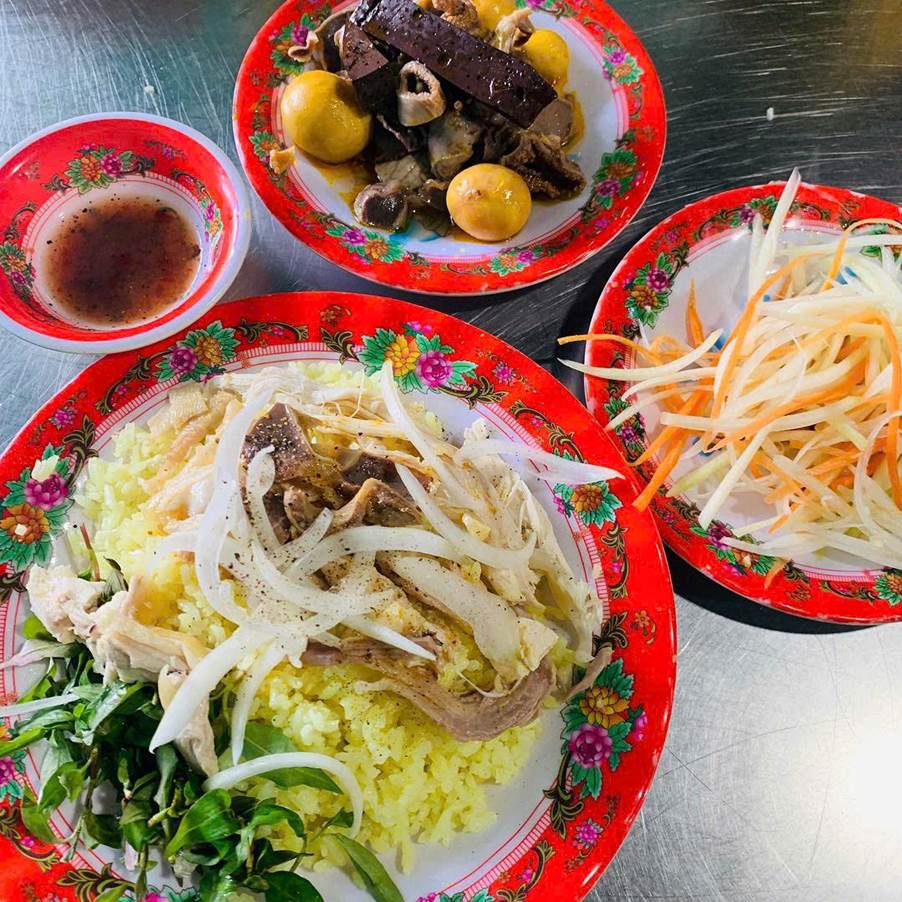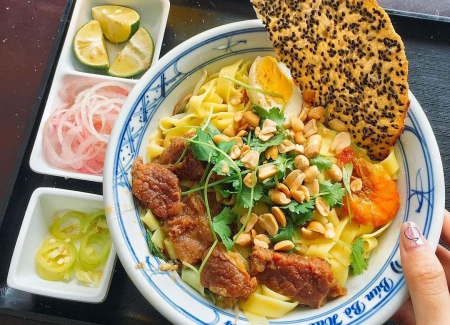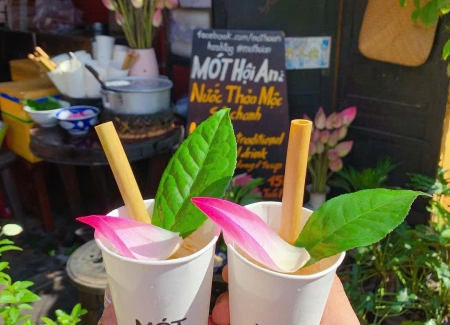Top 5 Must-Try Dishes When Visiting Hoi An (Part 1)
Hoi An's cuisine is a vibrant canvas that reflects the historical flow through each flavor. As a bustling trading port since the 16th century, Hoi An has embraced influences from various cultures, including Chinese, Japanese, and Western, to create unique dishes with a deep historical imprint. Each dish here is like a story about cultural convergence-where Eastern spices blend harmoniously with Western cooking styles. Despite many influences, Hoi An cuisine maintains the simplicity and authenticity of the Vietnamese people, highlighting the perfect balance between tradition and creativity. When enjoying a dish in the ancient town, you not only savor the rich flavors but also feel the echoes of the past, when Hoi An was a crossroads for many civilizations around the world.
Top 5 Must-Try Dishes When Visiting Hoi An (Part 1)
Hoi An's cuisine is a vibrant canvas that reflects the historical flow through each flavor. As a bustling trading port since the 16th century, Hoi An has embraced influences from various cultures, including Chinese, Japanese, and Western, to create unique dishes with a deep historical imprint.
Each dish here is like a story about cultural convergence-where Eastern spices blend harmoniously with Western cooking styles. Despite many influences, Hoi An cuisine maintains the simplicity and authenticity of the Vietnamese people, highlighting the perfect balance between tradition and creativity. When enjoying a dish in the ancient town, you not only savor the rich flavors but also feel the echoes of the past, when Hoi An was a crossroads for many civilizations around the world.
- Hoi An bread (Bánh mì Hội An)
Banh Mi Hoi An is a unique culinary symbol, beloved by both domestic and international visitors when they come to the ancient town. Since Banh Mi was introduced to Vietnam, Hoi An has adapted the ingredients to create a Banh Mi that satisfies visitors and, of course, remains distinctly Vietnamese.
The highlight of Banh Mi Hoi An lies in the meticulousness and sophistication in every step of preparation. The outer crust is made from high-quality flour, baked just right to achieve the perfect crunch without being too hard, while the inside is soft and fluffy, fragrant and delicious. The filling inside is a harmonious combination of fresh herbs from Tra Que, flavorful char siu pork, fragrant Vietnamese sausage, a little chili, and rich sauce. All these elements blend skillfully, from the creamy pate to the various flavorful sauces, creating a dish that is both familiar and exceptional, captivating anyone who tastes it.
- Some recommended Banh Mi restaurants:
- Banh Mi Madam Khanh
Address: 115 Tran Cao Van, Minh An, Hoi An - Banh Mi Sum
Address: 149 Tran Hung Dao, Cam Pho, Hoi An - Banh Mi Phuong
Address: 2B Phan Chau Trinh, Hoi An
- Hoi An's Cao Lau noodle soup (Cao Lầu)
The people of Hoi An pass down the story that Cao Lau appeared in the 17th century, when the Hoi An port was opened, attracting traders from many countries, including the Japanese and Chinese. However, this dish is neither Chinese nor Japanese but a unique combination of various culinary cultures.
The name "Cao Lau" is thought to have originated from Chinese, referring to exquisite dishes meant for the upper class. Legend has it that the wealthy used to enjoy this dish on upper floors, under red lanterns, and over time, the name “upstairs” gradually became “Cao Lau.” This dish has become a famous specialty of the ancient town, carrying rich flavor and a profound historical story.
Cao Lau stands out not only for its unique name but also for its meticulous preparation, from ingredient selection to sauce preparation. The Cao Lau noodles are made from rice soaked in Ba Le well water and cooked with Cu Lao Cham wood ash, giving them a chewy texture and distinctive flavor. The dish is served with tender, fragrant char siu pork, fresh herbs, crispy rice paper, and a bit of rich sauce. When enjoyed, the wonderful harmony of the sweetness of the meat, the freshness of the herbs, and the subtle richness of the sauce creates a familiar yet unique, delicate yet rustic experience. Cao Lau is not just a dish; it's how Hoi An tells its story through flavors.
- Some recommended Cao Lau restaurants:
- Cao Lau Ba Le
Address: 49/3 Tran Hung Dao (street leading to Ba Le well), Hoi An - Cao Lau Co Lien
Address: 21 Thai Phien, Minh An, Hoi An - Cao Lau Thanh
Address: 26 Thai Phien, Minh An, Hoi An
- Hoi An Chicken Rice ( cơm gà Hội An)
Hoi An chicken rice appeared around the 1950s in Hoi An, Quang Nam, carrying the creative touch of the ancient town's residents. The Tam Ky area of Quang Nam is famous for its delicious chickens, and this precious ingredient was utilized by the people of Hoi An to create a distinctive and flavorful chicken rice dish. Initially, chicken rice was sold by street vendors throughout the small alleys of Hoi An, but over time, specialized restaurants serving this dish have appeared, attracting many visitors.

A delicious plate of Hoi An chicken rice starts with carefully selected ingredients. The chicken chosen is free-range, typically around 1kg in weight. After being cleaned, the chicken is boiled just right, keeping the meat soft and white and the skin golden. The chicken is shredded and mixed with onions, Vietnamese coriander, lime juice, and chili, creating a harmonious balance of sour, spicy, salty, and sweet flavors. The rice used is a sticky variety, cooked with chicken broth, pandan leaves, and turmeric to give the rice a beautiful yellow color, both fragrant and rich. When cooked, the rice has a captivating aroma that complements the richness of the chicken broth. A complete chicken rice plate is served with Hoi An chili sauce and a hot bowl of chicken soup.
Hoi An chicken rice is not only a culinary masterpiece but also a cultural symbol of the region, filled with care and love for traditional values.
- Some recommended Hoi An chicken rice restaurants:
- Chicken Rice TT Hoa Vien
Address: 149 Ly Thuong Kiet, Hoi An - Chicken Rice Ba Buoi
Address: 22 Phan Chau Trinh, Hoi An - Chicken Rice Ba Nga
Address: 08 Phan Chau Trinh, Hoi An
- Quang noodle (Mi Quang)
Mi Quang, a dish deeply ingrained in the culture of Quang Nam, has long been a source of pride for the locals. Although it is called "mi" (noodle), this dish is unlike any other type of noodle in Vietnam. Mi Quang is a harmonious combination of simple, rustic ingredients that are skillfully prepared to create a unique flavor that is unmistakable.
The dish starts with thick, chewy noodles made from finely ground rice flour, cut into thin, soft strands. The noodles are served with just enough broth, not as much as pho or bun, but rich and flavorful, simmered from bones and special seasonings. The highlight of Mi Quang is the filling, which can be shrimp, pork, chicken, snakehead fish, or egg, depending on preference and the season.
A bowl of Mi Quang always includes fresh herbs such as young mustard greens, lettuce, and shredded banana flower, along with crispy rice crackers and roasted peanuts. When enjoyed, everything blends together, creating a balance between the sweetness of the broth, the richness of the filling, the freshness of the herbs, and the crunchiness of the rice crackers.
Mi Quang is not just a dish; it's a part of the soul of Quang Nam – simple, rustic, yet rich and captivating, just like the people here.
- Some recommended Mi Quang restaurants:
- Mi Quang Ong Hai
Address: 6A Truong Minh Luong, Cam Chau, Hoi An - Mi Quang Co Sinh
Address: 170/5 Ly Thuong Kiet, Son Phong, Hoi An
- Pancake (Bánh Xèo)
Banh Xeo is a familiar street food from Central Vietnam, especially in Hoi An. Unlike Banh Xeo from other regions, Banh Xeo is small and perfectly sized for one person, so you can enjoy several pieces without getting tired of it. This dish is not only delicious but also carries the flavor of the homeland, pleasing even the most discerning diners.
To fully enjoy the flavor, Banh Xeo should be eaten hot. The crispy, thick crust wraps around a generous filling of pork, shrimp, and bean sprouts. You can dip it in sweet and sour fish sauce or wrap it with rice paper and fresh herbs for added freshness. The variety of herbs-lettuce, green banana, sour starfruit, herbs, and Vietnamese mint - are all fresh and help balance the richness of the Banh Xeo, creating a perfect culinary experience.
This dish is especially irresistible during the chilly days or rainy afternoons. Around the last three months of the year, Banh Xeo restaurants in Hoi An are always bustling with the cheerful sounds of customers. Taking a bite of a hot, crispy Banh Xeo and savoring the savory filling, you’ll feel not only your body but also your soul warmed up.
- Some recommended Banh Xeo restaurants:
- Gieng Ba Le restaurant
Address: 45/51 Tran Hung Dao, Hoi An - Banh Xeo Hai Dao
Address: 105 Nguyen Duy Hieu, Hoi An
If you love this article and wish to experience the wonders of Hoi An and Da Nang, book your tour today- no prepayment required!





